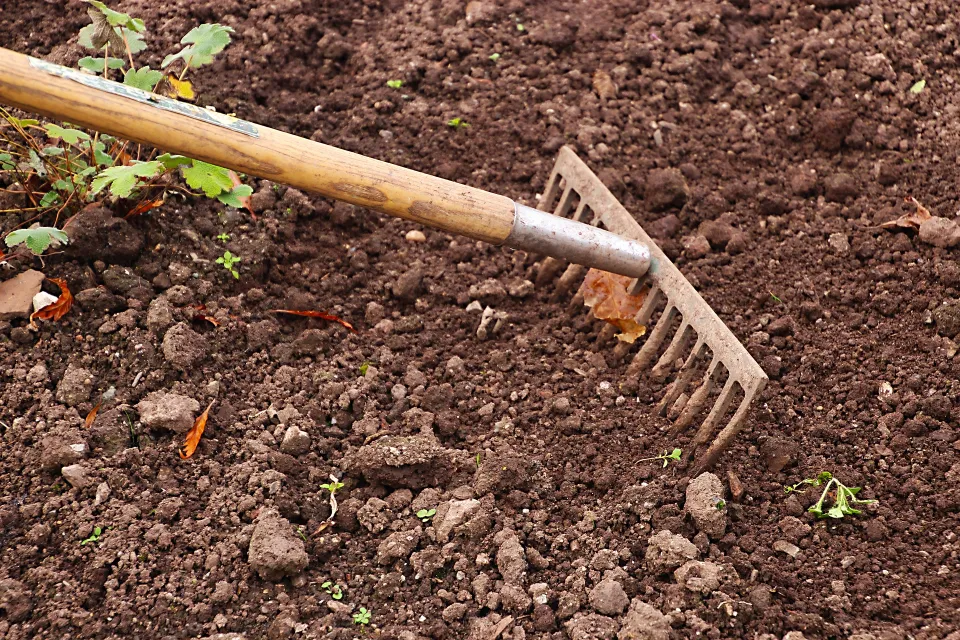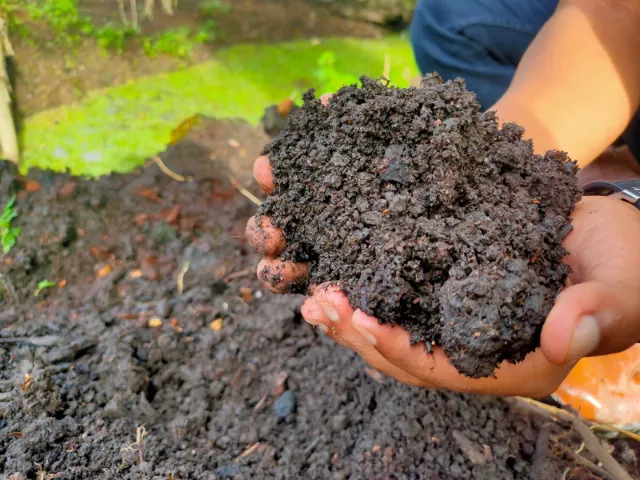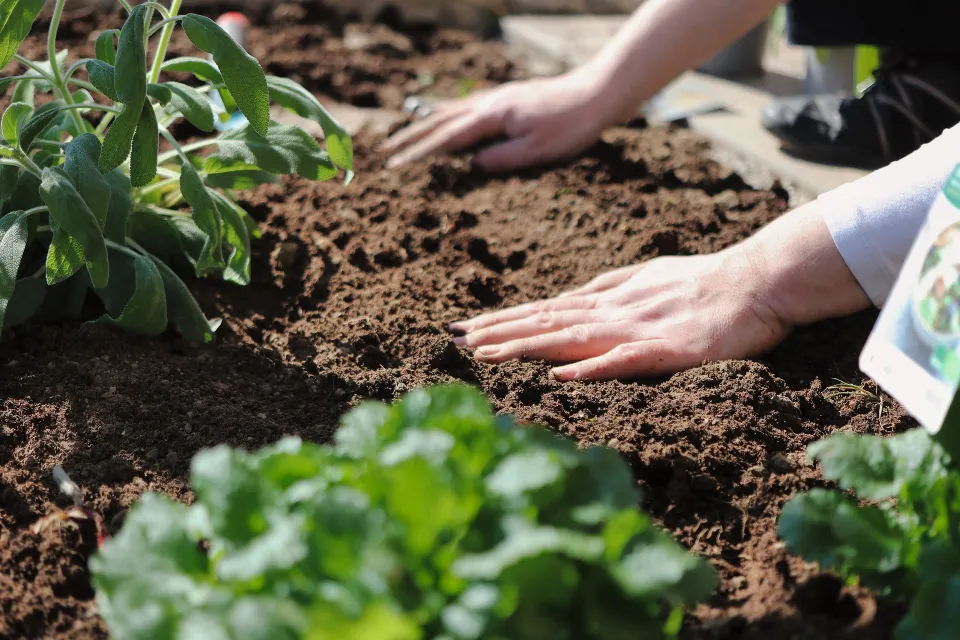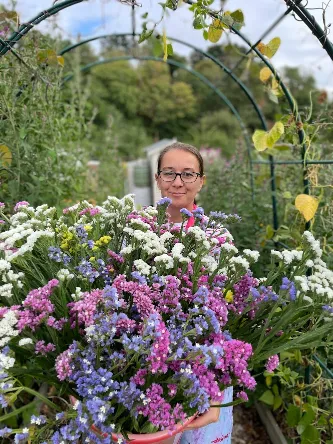Should we "No dig"?
Introduction
Having your own piece of heaven will have a different meaning to different person. For someone it might be their own house, for someone it might be a car, or a place where the person goes to eat, read, walk, It could be anything. For me it was to have a tiny plot of land where I can grow my fruit and veg. When I got a message about available plot at Lawrence Street I couldn’t be more happy! My dreams came true! It was the end of 2018 season and the plot I’ve been asked to have a look at didn’t look very inviting but it had so much potential! There was not much to do at the point of viewing as the growing season was closed and the plot has been abandoned for some time. I couldn’t even dig a fork into the soil. Well it was more like a Clay rather thay soil. Majority of the plot was covered with fabrics, carpets and other non growing materials. When the spring 2019 came, I got a shovel and I was ready to Dig for Gold!
You can tell , from these pictures, what I was dealing with… With so much enthusiasm, one fork, one shavel and pair of gloves I started my digging mission! It took me many hours, and lower back pains to get the plot and soil into shape but after hundreds hours of heavy labor, I decided to salvage old raised beds and even add more on my plot as there was no chance to create a healthy soil for growing in coming season. needed to make a baby steps. I still have a raised beds where I practice Digging and No Dig Method but I’m slowly starting to improve the soil around beds and Introduce no dig techniques,which in some way, is easier for me. It doesn’t mean it will be easier for you.
I created this article to help you make your own decision if you would like to also introduce No dig method into your garden.
About "No Dig"
No dig gardening is a technique that has been gaining popularity in recent years. It is a method of growing plants without the need to dig the soil. Instead, gardeners use a layered approach where they build a bed of organic matter on top of the soil. This method has several benefits over traditional methods of gardening, including better soil health, increased plant growth, and reduced maintenance.

The Basics of No Dig Gardening
No dig gardening is based on the principle that soil is a complex ecosystem made up of many different organisms, including bacteria, fungi, worms, and other insects. These organisms work together to create a healthy soil structure that can support plant growth. Tilling or digging the soil can disturb this ecosystem, leading to a decrease in soil health and a reduction in plant growth.
To avoid disturbing the soil, gardeners using the no dig method begin by creating a layer of organic matter on top of the soil. This layer can be made up of materials such as compost, straw, leaves, or grass clippings. The layer is typically several inches thick and is spread evenly across the top of the soil.
Once the layer of organic matter is in place, gardeners can plant directly into it. The plants will grow roots down through the organic matter and into the soil below. Over time, the organic matter will break down and mix with the soil, creating a healthier soil structure.

Benefits of No Dig Gardening
One of the main benefits of no dig gardening is improved soil health. By avoiding digging the soil, gardeners can preserve the complex ecosystem that exists within the soil. This can lead to an increase in soil fertility, as well as better water retention and drainage. Healthy soil can also support a wider range of plant species, which can lead to greater biodiversity in the garden.
Another benefit of no dig gardening is increased plant growth. The layer of organic matter on top of the soil can act as a mulch, helping to retain moisture and regulate soil temperature. This can lead to faster and more consistent plant growth. Additionally, the layer of organic matter can help suppress weed growth, reducing the need for weeding and other maintenance tasks.
Finally, no dig gardening can be less labor-intensive than traditional methods of gardening. Because there is no need for frequent tilling or weeding, gardeners can spend less time maintaining their garden and more time enjoying it. This can be especially beneficial for gardeners with physical limitations or busy schedules.

Challenges of No Dig Gardening
While no dig gardening has many benefits, it is not without its challenges. One of the main challenges is the need to create and maintain the layer of organic matter on top of the soil. This can be time-consuming and may require significant resources, such as compost or other organic materials.
Additionally, no dig gardening may not be as effective at controlling certain types of weeds or pests as traditional tilling methods. This can be especially true for weeds that grow deep roots or pests that burrow into the soil. Gardeners using the no dig method may need to supplement their approach with other weed and pest control methods.
Finally, no dig gardening may not be suitable for all types of soil. In some cases, the soil may be too compacted or depleted to support plant growth without the use of traditional tilling methods. Gardeners should assess their soil carefully before deciding whether to use the no dig method.
Pros
of NO DIG Garden-
Preserves soil structure and fertility
-
Reduces maintenance and labor
-
Improves soil health and promotes biodiversity
-
Reduces the need for synthetic fertilizers
-
Reduces water usage
Cons
of NO DIG Garden-
Initial setup can be time-consuming and costly
-
May not be as effective at controlling weeds
-
May require patience to see results
-
May not be suitable for all types of plants
-
May require more planning and preparation
Summary
In summary, no dig gardening has many benefits for soil health, water usage, and maintenance, but it may require more upfront resources and planning. Gardeners should consider their specific needs and goals when deciding whether to use this technique. There are many expert gardeners who practice this technique for many years and they fully recommending this method. One of them is Charles Dowding. Check his website if you would like to dig deeper into this subject. Happy Gardening!
